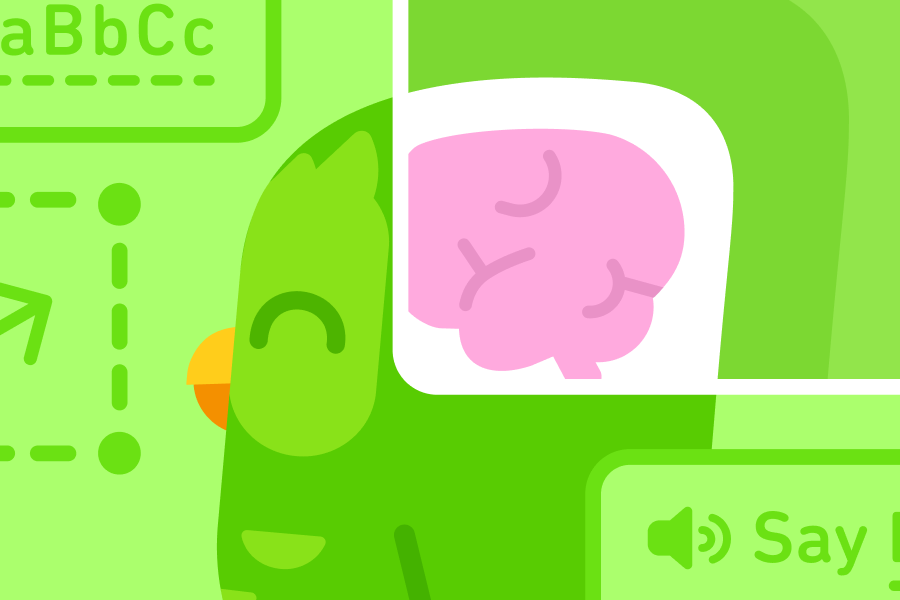Our brains are built for learning… but how do they do it? Learning is something that humans do naturally, often without noticing it, and our brains come equipped with a number of pattern-finding tools to help us start learning from the moment we're born. One of these powerful learning tools is called statistical learning, and it works behind the scenes to make our brains the best computers around! Here's how statistical learning makes us such good learners.
What is statistical learning?
In statistical learning, your brain observes and counts what's happening around you, whether that's hearing a language, listening to music, or observing your surroundings. By calculating how often one thing happens before or after another, your brain learns how often different combinations happen together—and if some things always occur together, they might form an important unit that you'll want to remember.
Pattern-tracking, like statistical learning, is so built-in to how our brain works that we don't even notice that we're doing it. Because our brain doesn't announce what it's learned or what hypotheses it's working on from all those statistics, it often feels to us like a hunch, guess, or instinct that something sort of goes together or *feels* like the right pattern.
Whenever your brain thinks there might be a pattern in the data, it gets to work analyzing it… and your brain is always watching 👀 Babies just a few days old show evidence of tracking patterns in musical pitches from long streams of tones. That's because music has its own kind of musical "grammar," and our brains are built for this statistical analysis of pattern.
So then you won't be surprised that your brain analyzes patterns in language, too!
Statistical learning in your own language
Language is a kind of data that your brain pays close attention to, and there's all kinds of sub-parts of language to track and analyze.
In the language you know best, your brain has tracked co-occurrences—what things occur together. (AI, like Large Language Models, also looks for these patterns!) It counts how often one thing follows another and computes transitional probabilities to understand what is likely to make up words and phrases.
For example, if you learned English as a baby, you probably heard the word baby a lot: "Hi, baby!" "What a pretty baby!" "Oh, does the baby need a nap?" "You gotta see the baby!" So your brain started to learn that if you heard ba- there was a pretty good chance that -by is coming next, so it started to guess that ba + by might be an important chunk to remember together. But ba- can be followed by other things, too (like bagel), so your brain computed lots of language statistics to learn how often you heard different combinations and what else was going on in the environment. (This can clearly be a confusing time for New York babies.) 🥯
Here are 2 more calculations your brain has tracked in English:
- What kinds of words occur after "the." In English, nouns ("the shoe"), adjectives ("the old shoe"), and adverbs ("the really old shoe") can come after "the"—but your brain hasn't recorded any data of possessive pronouns like "my" coming after "the." (We can't say "the my shoe," even though this is allowed in other languages!)
- That some vowels have to have a consonant after them. For example, the English "u" sound in "put" (represented with /ʊ/ in the International Phonetic Alphabet) can only be in words if it's followed by a consonant—so we can have words like "do" (with the sound /u/) and "me" (with the sound /i/) with no consonant after the vowel, but words with /ʊ/ always have a consonant (like "good," "put," and "book").
Even though you might not be conscious of those rules, they are patterns your brain has been tracking since infancy, and you use them every day!
Statistical learning in new languages
Your brain does the same kind of tracking and analysis in the language you're learning, too:
- Spanish learners track grammatical gender. Your brain analyzes which nouns occur with masculine words, like el (the), alto (tall), and rojo (red), and which nouns occur with feminine words, like la (the), alta (tall), and roja (red).
- German learners analyze where verbs go. There are several different patterns for where verbs go in German sentences, and every time your brain sees a new sentence, it records how many verbs were in the sentence, what order they were in, and whether they were conjugated.
- Japanese learners log when different polite forms are used. Japanese has a complex system of formality, depending on the specific kind of relationship between two people, and your brain records what form was used, who was speaking, and who was being spoken to.
For adult learners, the challenge of learning is that it's much harder for your brain to get enough data, and the right kind of data, to learn the patterns. In your own language, you've had years to accumulate a huge mental corpus of all the ways words are used, but for a new language, most adults only get a little bit of data at a time. That makes it tough for your brain to track all the patterns you need to know in your new language!
That's why it's so important to develop strong study habits and find ways to practice your language every day, by doing your Duolingo lessons and getting that valuable language data in the ways you enjoy the most, like through music, TV and movies, and even video games.
Your brain is the ultimate AI!
Behind the scenes, your brain has been counting, tracking, and analyzing everything around you—including language. It's learned the complicated patterns that you use in your own language every day, and it's hard at work figuring out your new language, too. So give it what it wants: more data! 🤓



